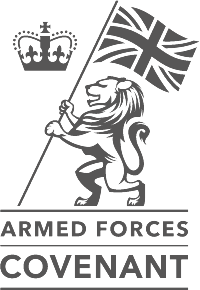ITIL has always been about delivering ‘value’. And what I really love about ITIL 4, the latest version of ITIL, is that is puts value at the heart of the framework, see figure 1.

Figure 1: Value is at the heart of the ITIL4 framework.
Copyright © PeopleCert 2022. All rights reserved.
When it comes to organisational or personal ‘values’ – i.e. the principles that guide our work – how do ITIL and ITSM respond to the ‘value’ versus ‘values’ debate? Whereas most organisations would list sustainability as a core value, ITSM doesn’t play a predefined role in delivering value for a more sustainable business. This lack of definition can, indeed, be an advantage for IT. We can help define, deliver, and empower sustainable transformation within our businesses.
“How?” I hear you ask.
In my view, there are three different avenues you can take; I call them Green Avenues:
- Focus on ESG (Environmental, Social and Governance) reporting – great for large corporations;
- Focus on maximising positive outputs – great for software organisations that can scale and transform; and
- Focus on minimising negative inputs – great for all shapes and sizes of organisation who want to make an impact.
The following sections cover the above points in detail; and a bit like everything in sustainability, the avenues are interconnected and support each other.
Green Avenue 1: Creating change through governance and working with your ESG reporting team
ESG reporting applies to large organisations in particular. It calls on a number of standards and frameworks, and they include TCFD (Task Force on Climate-related Financial Disclosures) reporting practice, GRI (Global Reporting Initiative), SASB (Sustainability Accounting Standards Board) reporting practice, and SDGs (Sustainable Development Goals). A single organisation may report on one or more reporting practice.
As a service manager, you can help your ESG compliance team to gather data for their ESG governance reports; this data can be difficult to source, track and measure and is often saved in multiple Excel worksheets, post-it notes or other systems.
Green Avenue 2: Expanding positive impact and engaging in customer-driven sustainability
Another avenue to realising green goals is to take a bottom-up approach, as opposed to the top-down governance-led model. This model works well for companies with digital, scalable offerings, such as software companies and IT service providers and resellers.
- First, gather sustainability-minded customer-facing individuals from across your organisation.
- Collectively, come up with a list of ways that you are already making an impact for your customers, considering the following:
- How do your customers utilise your services / products to make the world a better place?
- Do you have customers who work within the green sector and who use your offering to realise efficiencies? How do you help them create value?
- Brainstorm ways that you could help your customers realise their sustainability targets through adapted offerings. Questions to ask include:
- Would new customers in the sustainability sector benefit from our platform/ offering? If so, what would we need to adapt to make it a reality? Who do we need to engage internally?
- How could our offering be adapted to drive the green revolution, to help companies transform into sustainability powerhouses?
- Could our products or services be adapted to help our customers become circular businesses, or become part of a circular business ecosystem?
- What is our role in such a circular economy?
- Who do we need to work with externally to make our new offerings a reality?
- Be sure to collect the above findings into customer case studies, whitepapers and presentations. Feed the gathered information to the wider sales team. Ensure you have executive buy-in and commitment to invest in the new adapted offerings.
Green Avenue 3: Limiting your negative impact and tracking your carbon emissions and those of your suppliers
You may have heard about carbon neutrality, net zero carbon, or Scope 1, 2, and 3 emissions. Limiting greenhouse gas emissions – of which carbon dioxide (CO2) is one – is a major aspect of sustainability. If we can reduce, and finally get rid of, net greenhouse gas emissions, then we can limit global warming. Keeping our planet the right temperature is crucial to say the least. Governments are already preparing for up to 1.2 billion (yes, you heard that right) climate refugees across the world in the next couple of decades. You don’t need to be a social scientist or a statistician to figure out that pretty much everyone will be affected.
So, what can we do in service management to limit carbon emissions?
In short, carbon emissions are categorised into three scopes:
- Scope 1 emissions are all the emissions that you or your organisation produces
- Scope 2 emissions are the Scope 1 emissions of your electricity supplier, and
- Scope 3 emissions are the Scope 1 emissions of your other suppliers, and of your customers.
Ideally, all organisations would know their Scope 1 emissions. Then, Scope 2 and Scope 3 emissions would be a matter of adding them up.
For IT, one of the main issues concerns in-house data centres, and the electricity and cooling required to run them. How are the data centres powered? Are we using green, renewable energy? Could we change to renewable energy? Many organisations use hybrid cloud storage; how are these facilities powered by our supplier?
Another area where IT plays a key role is electric waste, as well as digital waste. For electric waste, can we prevent or delay waste by extending the use of our assets? For digital waste, we can ask if we really need all that storage, or we could put rules in place to automatically delete old data. Addressing these areas creates economic efficiencies too.
Conclusions
Sustainability is an exciting opportunity, and a big responsibility, for IT. It drives ITSM to think in new ways of delivering value to their organisations. Collaborating across the business around the topic of sustainability enables your internal and external customers transform and become sustainable entities.
As an ITSM leader, you can make a conscious choice to lead a sustainable transformation. You can follow one or more of the Green Avenues: 1. ESG reporting, 2. maximising positive outputs, and 3. minimising negative inputs.

Figure 2. Three Green Avenues to Sustainable ITSM.
Copyright © Dr Tuuli Bell & Adobe Illustrator’s GenAI.

Tuuli Bell
Dr Tuuli Bell is aManagement Consultant at Tuuli Bell Ltd (www.tuulibell.com) & Senior ESG Advisor at The ESG Institute (https://www.the-esg-institute.org/).
She has over 10 years of first-hand experience in IT Service Management and related disciplines. She has authored books on technical sales, including the timely topic of sustainability, in the context of technical sales (https://www.amazon.co.uk/dp/B09PKPTQXX). She has also delivered courses and workshops on Sustainable IT. Contact Tuuli for Sustainability Foundations & IT Strategy workshops at[email protected]/https://www.linkedin.com/in/tuulibell/.


